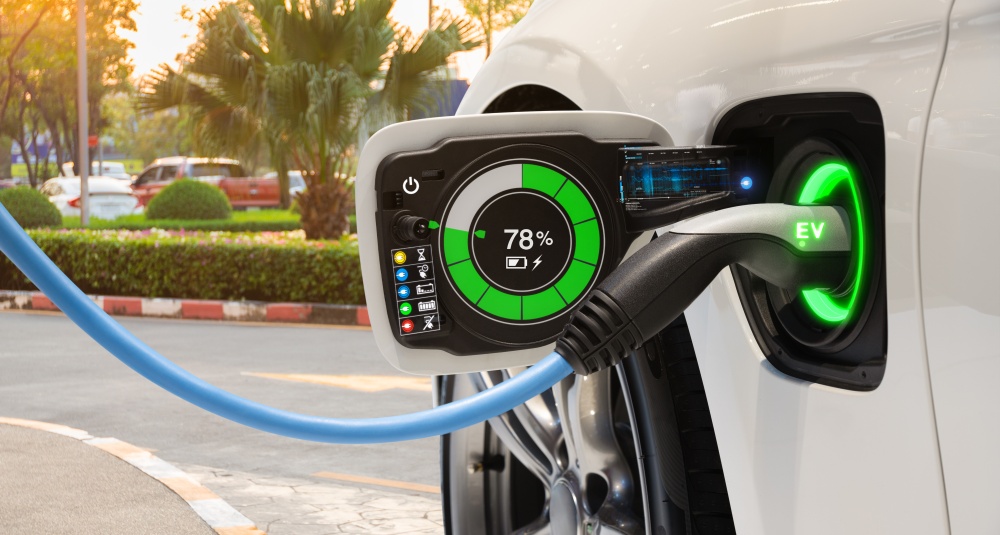
At the end of 2020, the market capitalization of Tesla was roughly equivalent to that of the nine largest automakers in the world combined. In 2019, over 3 million Electric Vehicles (EVs) were sold, and with a forecast CAGR of 21% until 2030, it is expected that nearly 27 million EVs will be sold in 2030.
Ford, Volkswagen, BMW, Nissan, Toyota, GM, and Honda have all announced ambitious goals for their EV offerings, and deadlines between 2022 and 2025 are fast approaching.
EVs are part of many major and positive trends globally, including the need to address carbon emissions, reduce dependence on fossil fuels, improve safety when combined with assisted and autonomous driving, support the more cost-efficient transportation of goods (commercial vehicles) and establish smart city ecosystems.
The current limitations of battery technology are the main obstacles preventing the widespread adoption of EVs – including their cost, range, and charging time. According to Bloomberg, about 30% of an EV’s cost to the consumer is its battery.
EV ranges have improved, but still don’t fully address consumer needs. The longest range of any electric vehicle is around 370 miles. This creates logistical complications along the routes Americans travel to reach common destinations.
Finally, these batteries take a long time to charge. EVs need to be able to charge in the amount of time a family would typically spend stopping for lunch on an extended road trip.
The demand for improved Lithium-Ion batteries is enormous. Currently valued at $29 billion, by 2023, the market is expected to grow to over $45 billion. What the market needs right now is innovation that makes batteries last longer and charge faster without breaking the bank. Further, battery innovations must complement current battery manufacturing techniques.
TruSpin, a Birmingham, Alabama-based start-up specializing in advanced materials, has set its sights on innovating a step-change in the capabilities of batteries to address what co-founder and CEO, Robert Agnew, has termed “the approaching energy density crunch.”
Established in 2019 by Robert Agnew and Anthony Brayer, TruSpin’s platform manufacturing process for generating silicon nanofibers unlocks vast potential for rechargeable Lithium-ion batteries.
“Deploying silicon nanofibers within the negative side of the battery, referred to as the anode, multiplies the energy density of lithium-ion batteries,” said Agnew. “The anodes of standard Li-ion batteries are made of graphite, so they’re fundamentally limited by graphite’s ability to store lithium ions. Silicon can store a whole lot more lithium ions, but not just any silicon will work – it needs to be specialized to have particular features.”
A small number of companies have emerged, each offering their own form of specialized silicon. Their materials perform well, and these companies have achieved astronomical valuations, but their approaches are overly complex. This inflates costs and impedes industrial-scale production. TruSpin’s manufacturing process, AC electrospinning, yields specialized silicon without the cost-inflating complexity or impediments to scale.
“Other companies in silicon anode tech have spent years and hundreds of millions of dollars refining methods for producing highly-engineered materials that operate within strict dimensional parameters on the nanoscale,” Agnew explained. “TruSpin’s technique imparts the desired features to be innately embodied by the nanofibers with a high degree of spontaneity. Basically, it takes some skill to operate the oven, but the good stuff is already baked into the cake.”
Agnew believes that TruSpin’s innovation will enable silicon-anode batteries to soon match standard li-ion batteries in cost-effectiveness and industrial scalability, and the technology offers additional benefits directly addressing market needs.
Because silicon can withstand high currents, it enables much faster charging times. “We’re seeing batteries with silicon as the primary anode constituent achieving an 80% charge in well under 15 minutes now,” Agnew said.
One of the least known, but most important, considerations is the capital expenditure required for battery manufacturers to adopt a new technology.
“People rarely consider how batteries are made, but we can’t ignore that billions of dollars have been invested in factory tooling designed to make batteries in a specific way,” explained Agnes. “If a new material is being proposed for use in a battery, it needs to be compatible with the existing manufacturing processes. TruSpin’s nanofibers integrate with these existing methods, harmonize well with other popular battery components, and our process for making them has robust operating environment resiliency. Most nanomaterial solutions never escape the lab; ours is ready for the factory floor.”
The EV industry is growing rapidly, as is the desire for battery solutions to increase the reliability of renewable energy sources like wind and solar. These drivers combine with established Li-ion intensive industries such as consumer electronics which are projected to experience tremendous growth as well.
“The electrification of America is the future,” Agnew added. “As we undergo this transformation, consumer demands will trigger the energy density crunch. Silicon anode tech is the only solution that checks all the boxes for filling the capability gap. Obstacle courses always reveal deficiencies in agility, and the approaching period of intense competition will be no different for the corporate participants whose products’ performance depends on that of their batteries.”
While there are relatively few start-ups in silicon anode tech, it is only a matter of time before advanced Li-Ion batteries deploying their materials become the industry standard.
On April 13, Agnew will be speaking virtually at The Frontier Conference 2021 on the following panels: Applications, Trends and the Future of Advanced Materials and Aerospace & Defense Industry: What Technologies Are Driving Innovation?
Arti Loftus is an experienced Information Technology specialist with a demonstrated history of working in the research, writing, and editing industry with many published articles under her belt.Edited by
Erik Linask